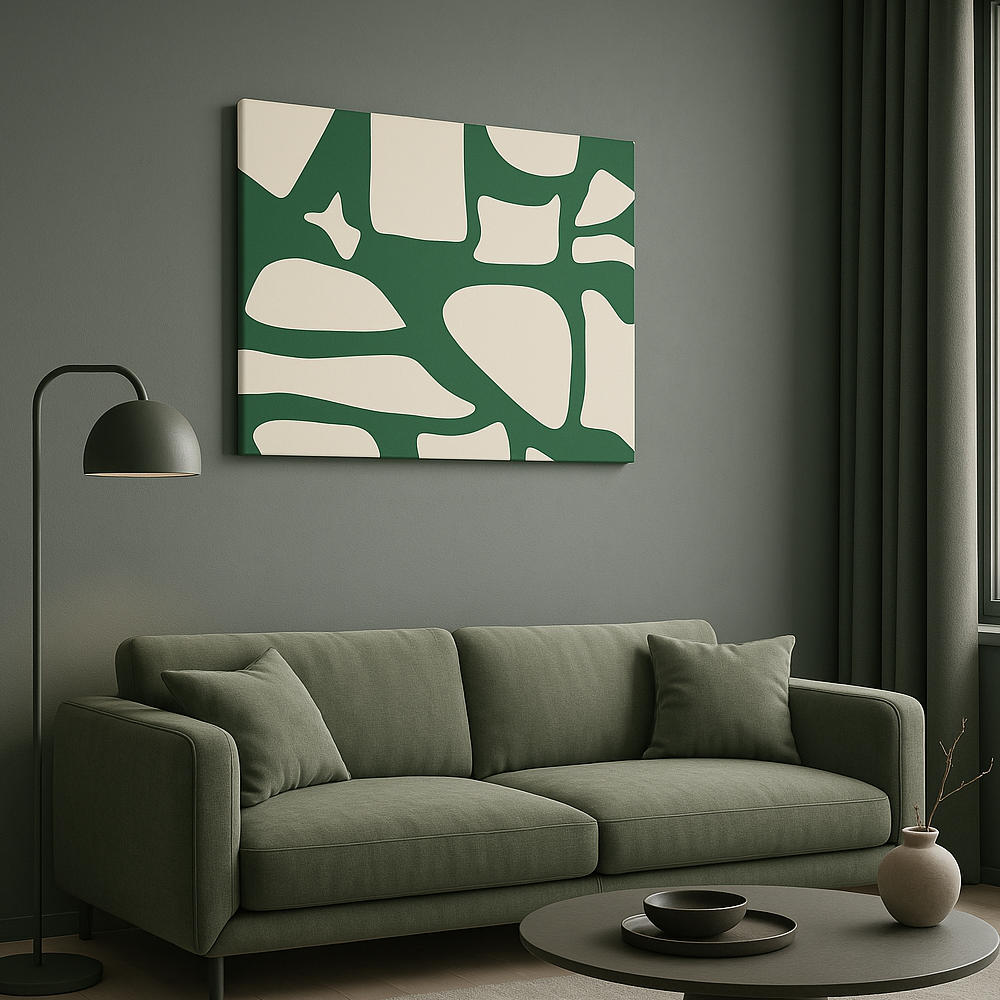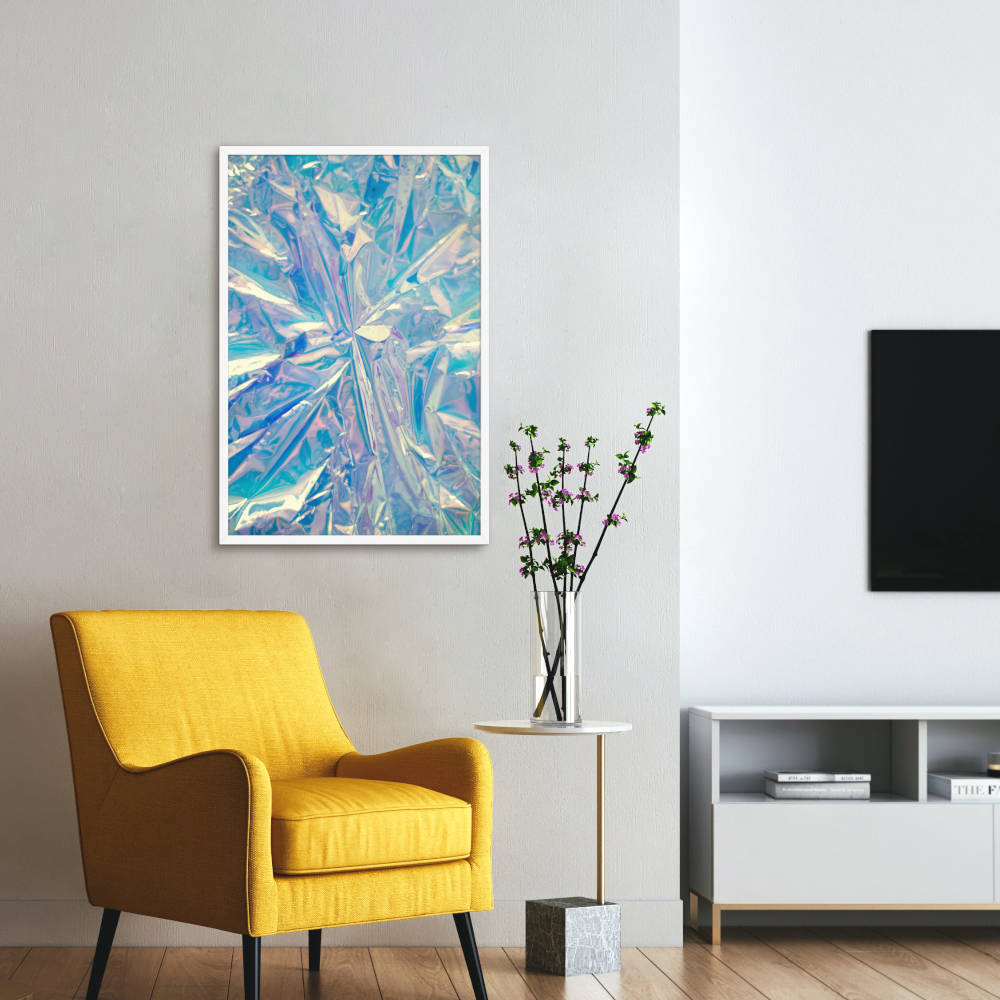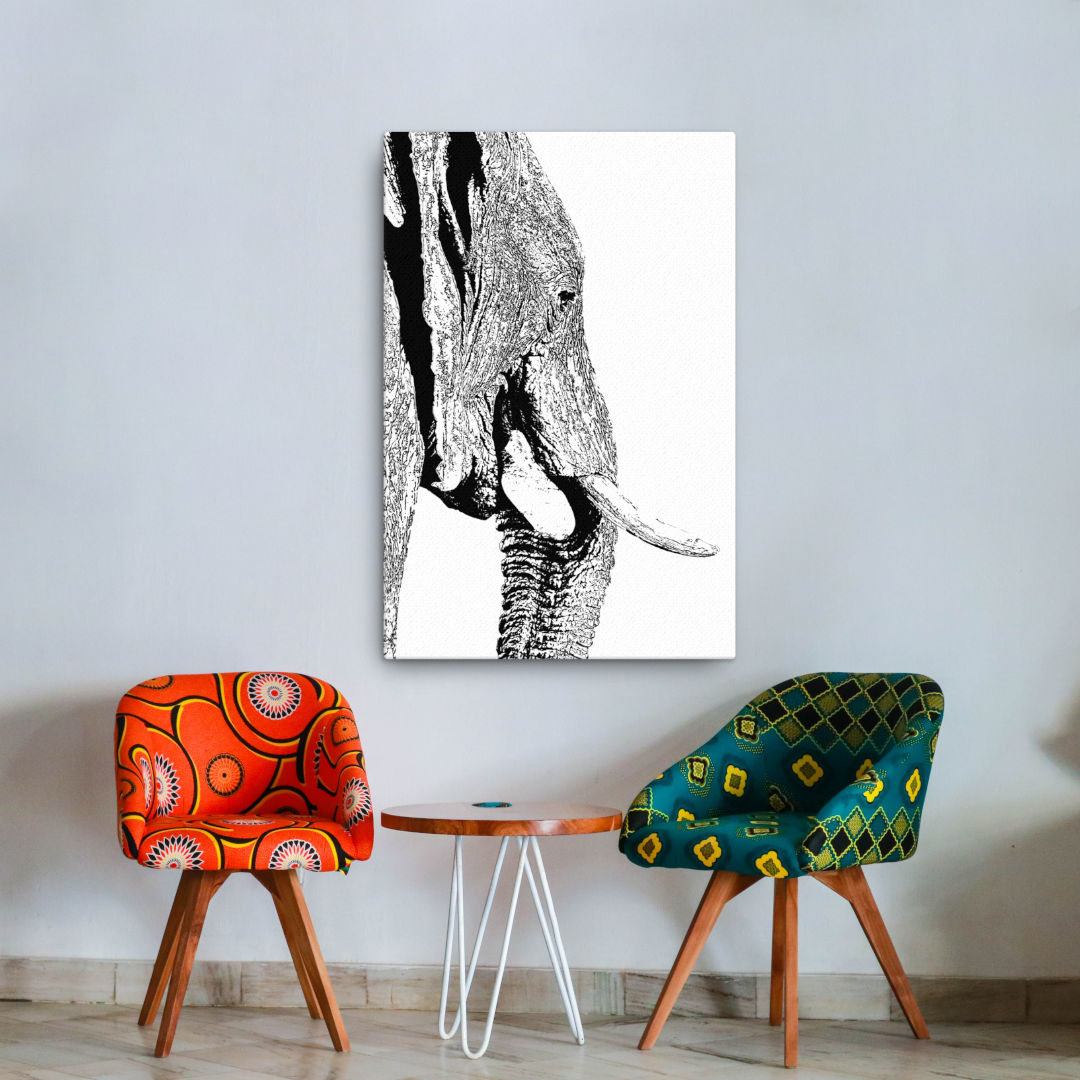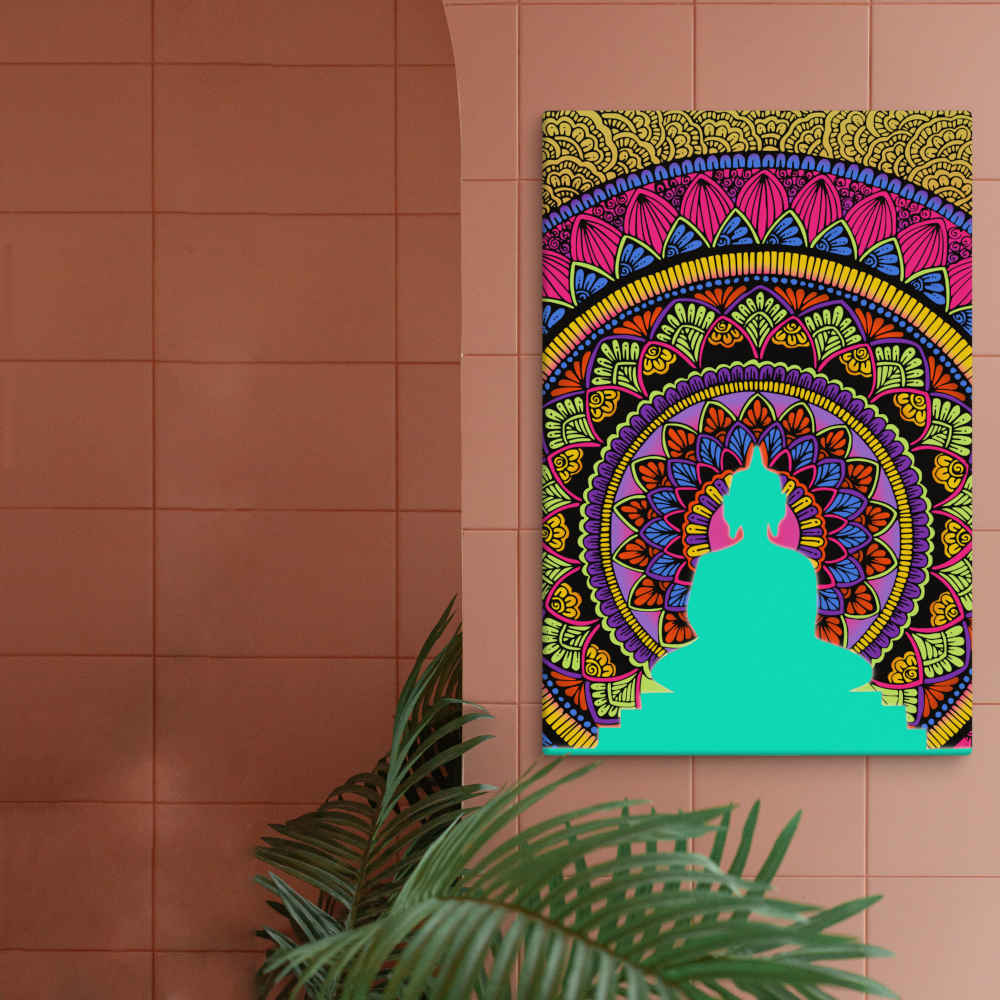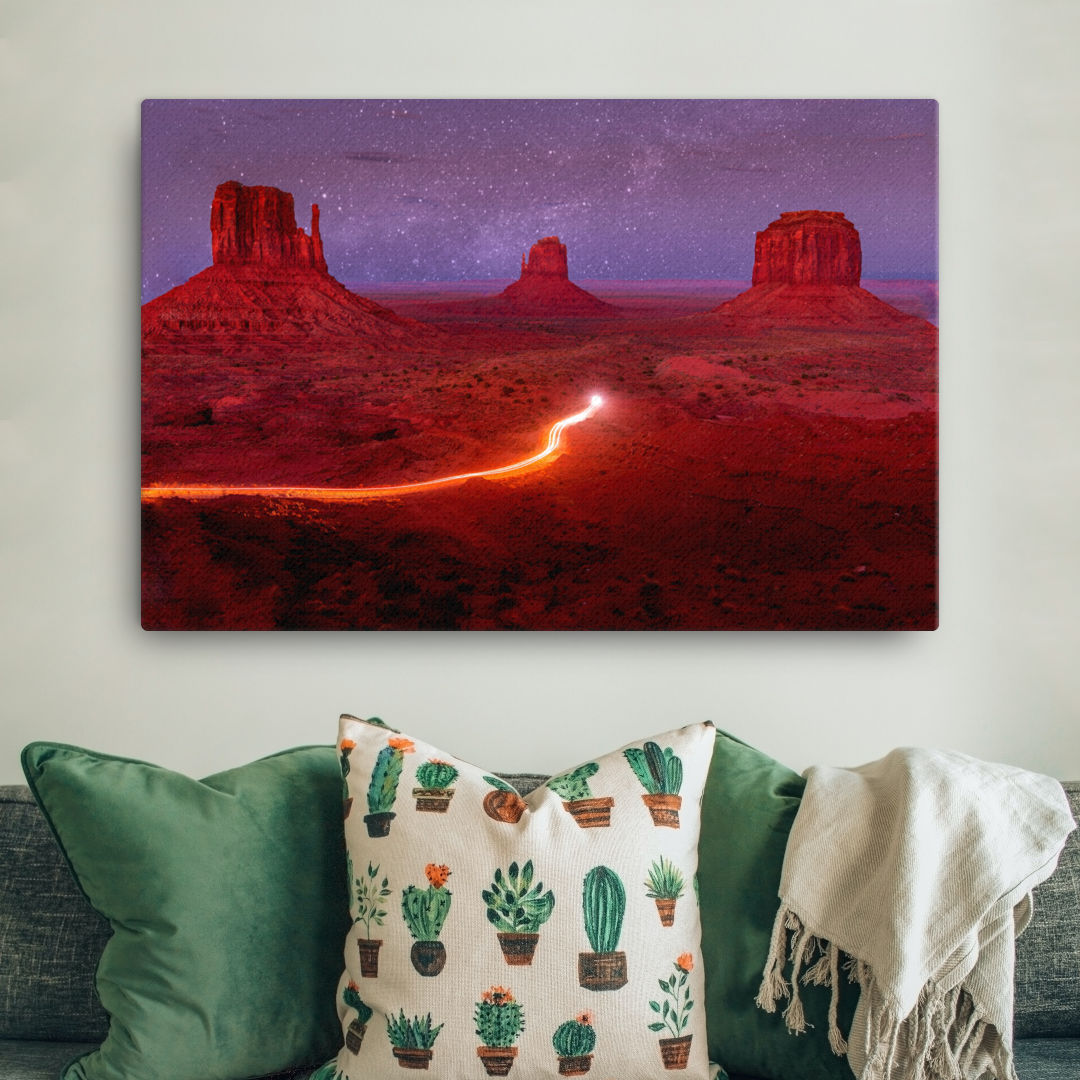
Sustainable Wall Art: Eco-Friendly Materials and Practices at Crofty Prints
Share
Key Takeaways
- Crofty Prints uses acid-free, pH-neutral materials that reduce environmental impact
- Sustainable art prints incorporate eco-friendly papers, water-based inks, and responsibly sourced wood
- Hand-stretched canvas and local production minimize carbon footprint
- Eco-conscious wall art can last longer, reducing the need for replacements
- Sustainable wall decor combines environmental responsibility with aesthetic appeal
Introduction: Why Sustainability Matters in Wall Art
Traditional art print production can leave a substantial environmental footprint. From chemical-heavy inks to non-recyclable materials and excessive packaging, the industry has historically contributed to deforestation, chemical pollution, and landfill waste. As art adorns our walls and expresses our values, the methods behind its creation should align with care for our planet.
Today's consumers increasingly recognize that the beauty in their homes shouldn't come at Earth's expense. The growing demand for eco friendly art prints reflects a collective shift toward mindful consumption. When selecting pieces for our living spaces, considering the environmental impact has become as important as the visual appeal.
Art print producers now face a critical responsibility to adopt greener practices. By choosing environmentally friendly wall art, consumers support companies committed to reducing environmental harm. This creates a virtuous cycle where sustainability becomes not just a selling point but a standard practice.
The art we display makes a statement about our values. When that art is produced with respect for natural resources, it carries deeper meaning. This connection between aesthetic choices and environmental ethics represents a significant evolution in how we think about decorating our spaces.
What Makes Art Prints Sustainable?
Sustainable wall decor encompasses several essential elements that work together to minimize environmental impact while maximizing product quality and longevity. Understanding these factors helps consumers make informed choices when selecting art for their homes or offices.
Acid-free paper forms the foundation of eco-conscious printing. Unlike regular paper, acid-free variants don't contain lignin, which causes yellowing and deterioration over time. This quality not only extends the print's life but also means fewer replacements and less waste. Crofty Prints commits to using these premium papers across their entire collection.
pH-neutral inks play an equally important role in sustainable printing. These formulations avoid harsh chemicals found in conventional printing inks that can harm water systems and soil when discarded. Water-based alternatives deliver vibrant colors without the environmental cost, ensuring your wall art remains both beautiful and responsible.
Eco-Friendly Inks Minimize Environmental Impact
Traditional printing inks often contain volatile organic compounds (VOCs) that contribute to air pollution. In contrast, water-based inks used in sustainable art are low in VOCs, reducing harmful emissions and promoting healthier indoor air quality.
Source: EcoFriendly Printer
Responsible sourcing practices represent another critical aspect of sustainability in art production. This includes using wood from managed forests for frames and stretcher bars, ensuring replenishment of harvested trees. Crofty Prints' dedication to this principle appears in their solid wood components used in handmade canvas art.
Waste reduction strategies further distinguish truly sustainable art producers. From efficient cutting patterns that maximize material use to recyclable packaging, these practices minimize what ends up in landfills. Production processes that reduce energy consumption, such as Crofty Prints' hand-stretching technique, further decrease the carbon footprint of each artwork.
Local manufacturing, whenever possible, reduces transportation emissions while supporting community craftspeople. This approach contrasts sharply with mass-produced imports that generate significant shipping pollution. The attention to detail in Crofty's matte coating process—applied to minimize glare—demonstrates how sustainability and quality naturally complement each other.
Eco-Friendly Materials Used by Crofty Prints
The materials chosen for art production directly determine both environmental impact and product quality. Crofty Prints utilizes a carefully selected range of eco-conscious materials throughout their creation process, ensuring minimal ecological footprint without compromising artistic excellence.
Archival-grade, acid-free paper forms the foundation of Crofty's print collections. This specialty paper eliminates lignin and acidic components that cause conventional papers to yellow and deteriorate. The production process for these papers typically uses fewer harmful chemicals and bleaches. The resulting prints maintain their color fidelity and structural integrity for decades, preventing the waste associated with frequent replacements. For consumers, this means wall art that remains vibrant and pristine far longer than conventional alternatives.
Water-based inks represent another cornerstone of Crofty's environmental commitment. Unlike solvent-based alternatives that release volatile organic compounds (VOCs) during drying, water-based formulations minimize air pollution and associated health risks. These inks achieve remarkable color depth and accuracy while remaining biodegradable and less toxic. Print technicians work with these specialized inks to achieve the perfect balance of saturation and detail across diverse artistic styles.
Sustainably sourced wood components demonstrate Crofty's holistic approach to environmental responsibility. Each frame and stretcher bar comes from forests managed according to replenishment principles, ensuring continuous tree cover and habitat preservation. The solid wood construction not only provides superior stability for canvas stretching but does so without contributing to deforestation. These wooden elements eventually biodegrade naturally at the end of their lifecycle, unlike plastic alternatives that persist in landfills.
Responsible Sourcing Preserves Natural Resources
Utilizing materials from responsibly managed forests ensures that the production of art supplies does not contribute to deforestation. This practice helps maintain biodiversity and supports the long-term health of forest ecosystems.
Source: Home Needs 24
The combination of these materials creates art pieces that support environmental health throughout their lifecycle. From production to display to eventual disposal, eco friendly posters and canvas prints from Crofty minimize ecological harm. These carefully selected materials ensure that art lovers can decorate confidently, knowing their choices align with environmental values.
Responsible Sourcing and Craftsmanship
The journey of creating truly sustainable art begins long before the printing process. Responsible sourcing forms the foundation of environmentally conscious wall art, and Crofty Prints has developed a comprehensive approach to ensuring their materials meet stringent ethical standards.
Quality and planet-friendly practices go hand-in-hand at Crofty Prints. By selecting materials based on both performance and environmental impact, they demonstrate that sustainability need not compromise artistic excellence. Their sourcing specialists maintain relationships with suppliers who share these values, creating a supply chain where each component meets dual criteria of quality and responsibility.
The artisanal process at Crofty brings together traditional craftsmanship and modern eco-awareness. Each canvas undergoes hand-stretching over solid wood frames, a practice that not only ensures perfect tension but also reduces machine energy consumption. This hands-on approach allows skilled artisans to inspect every piece individually, minimizing waste from manufacturing errors that often plague mass production facilities.
Local production offers multiple sustainability advantages that extend beyond the obvious reduction in shipping-related carbon emissions. By working with nearby suppliers and craftspeople, Crofty supports regional economies while maintaining closer oversight of environmental practices. This proximity enables more frequent quality checks and fosters innovation in sustainable techniques through direct collaboration with material producers.
The human element in production creates subtle but significant quality differences in the finished artwork. Machine-stretched canvas often shows inconsistent tension that may loosen over time, while hand-stretched pieces maintain their tautness for years. The artisans who craft each piece bring an understanding of materials that automated processes cannot replicate, resulting in superior corner folds and more precise stapling patterns.
Perhaps most importantly, this commitment to responsible sourcing and craftsmanship builds a transparent relationship with customers. Art lovers can trace the journey of their wall decor from sustainable forests to their living rooms, confident that each step prioritized both aesthetic quality and environmental stewardship.
Popular Sustainable Collections for Every Space
Crofty Prints offers a diverse range of collections that perfectly blend aesthetic appeal with environmental responsibility. These carefully curated selections demonstrate how sustainability enhances rather than limits artistic expression, providing options for every decorating preference and room style.
The Animals Canvas collection captures the majesty and character of wildlife through striking imagery printed on eco-conscious materials. These nature-inspired pieces bring a sense of the outdoors inside while honoring the natural world through sustainable production practices. The black and white elephant canvas exemplifies this approach, delivering dramatic visual impact through minimal color use that reduces ink consumption. These timeless designs connect viewers with the animal kingdom while supporting conservation through responsible material choices.
The Artistic Canvas collection showcases bold, expressive designs that stimulate imagination and conversation. Every piece in this collection benefits from Crofty's commitment to eco-friendly materials and processes. The meditating Buddha canvas demonstrates how spiritual themes and environmental consciousness naturally complement each other. These artistic statements work particularly well in meditation spaces, reading nooks, or anywhere requiring a thoughtful focal point. The water-based inks used in these prints achieve remarkable color depth without the chemical impact of conventional alternatives.
For those with wanderlust, the Locations Canvas collection offers sustainable ways to celebrate favorite destinations or dream travel spots. These travel-inspired prints transport viewers to magnificent landscapes and architectural wonders while remaining rooted in environmental responsibility. The Monument Valley print exemplifies how these pieces can evoke powerful sense memories or aspirations. Perfect for living rooms or home offices, these location prints remind us of the natural and cultural treasures worth preserving through sustainable practices.
Each collection demonstrates Crofty's comprehensive approach to sustainability without compromising artistic quality or emotional impact. The pieces work across various interior design styles from minimalist to bohemian, providing eco-conscious options regardless of aesthetic preference. By offering this diversity within their sustainable framework, Crofty Prints makes environmentally responsible choices accessible to every art lover.
Posters with Purpose: Art That Speaks and Lasts
Eco friendly posters represent one of the most accessible entry points into sustainable wall art. Crofty Prints has revolutionized this popular format by combining meaningful messaging and artistic expression with environmental responsibility, creating pieces that make statements in more ways than one.
Motivational messages gain additional impact when printed on sustainable materials. The inherent contradiction of inspirational quotes produced through environmentally harmful methods disappears when these uplifting words appear on acid-free, responsibly sourced paper. Crofty's motivational posters encourage personal growth while demonstrating commitment to planetary health, creating harmony between message and medium.
Artistic statements in poster form allow for bold visual expression that complements various interior design styles. The "Ride Through the Depths" poster exemplifies how dramatic imagery benefits from Crofty's fade-resistant inks, which maintain vibrant colors without the environmental impact of conventional printing methods. These artistic posters provide affordable ways to refresh spaces without the resource intensity of larger format pieces.
The technical aspects of sustainable poster production deserve attention from conscious consumers. Crofty utilizes long-lasting paper with significantly higher durability than standard poster stock. This archival-quality substrate resists tearing, moisture damage, and color degradation, extending the functional life of each piece. The acid-free composition prevents the yellowing and brittleness that typically force conventional posters into early replacement.
Fade-resistant inks play an equally crucial role in poster longevity. Crofty's specialized formulations maintain color integrity even when exposed to indirect sunlight, preventing the washing out that commonly affects mass-produced alternatives. These water-based inks achieve remarkable color fidelity without the harsh solvents and environmental contaminants present in traditional printing.
Storage and display considerations further extend poster lifespan. Crofty's production process creates pieces that resist curling and maintain flatness, particularly important for unframed display. When properly cared for, these sustainable posters remain vibrant for years, reducing the replacement cycle that contributes to waste and resource consumption.
The versatility of poster formats makes them ideal for rotating seasonal displays or temporary installations. Their lightweight nature reduces shipping impacts compared to heavier art forms, while their standard dimensions simplify framing with existing frames. This adaptability combines with environmental responsibility to make Crofty's poster collection a standout option for conscious decorators.
How to Choose Eco-Conscious Art for Your Home
Selecting truly sustainable wall art requires knowledge beyond simple "green" marketing claims. By understanding key indicators of environmental responsibility, consumers can make genuinely eco-conscious choices for their living spaces while supporting authentic sustainability leaders like Crofty Prints.
Look for acid-free materials as your first sustainability indicator. This specification appears on product descriptions for legitimately eco-friendly pieces. Acid-free substrates prevent yellowing and deterioration, extending artwork lifespan significantly. This longevity reduces the environmental impact associated with frequent replacements. When examining potential purchases, verify whether the description specifically mentions acid-free paper or canvas, not just vague "eco-friendly" terminology.
Choosing timeless designs represents another important sustainability strategy. Trend-driven art often cycles out of favor quickly, leading to premature disposal. Instead, select pieces with enduring appeal that will remain meaningful and aesthetically pleasing for years. Crofty's collections emphasize classic subjects and compositions that transcend passing fads, ensuring your wall art remains relevant through multiple interior updates.
Support brands with transparent production processes by investigating their environmental claims. Authentic sustainability practitioners like Crofty Prints readily share specific information about their materials and methods. Look for details about paper sourcing, ink formulations, and manufacturing locations rather than generalized "green" statements. This transparency indicates genuine commitment rather than marketing greenwashing.
Consider the complete lifecycle of potential art purchases. How will the piece age? Can components be recycled or composted eventually? Art that incorporates synthetic materials or plastic elements often creates disposal challenges. Crofty's emphasis on natural materials like wood and paper ensures their products can return to the earth at the end of their useful life.
Sustainable Art Supports the Circular Economy
By embracing practices like recycling and upcycling, sustainable art aligns with the principles of the circular economy. This model emphasizes keeping materials in use for as long as possible, reducing the need for new resources and minimizing environmental impact.
Source: Wikipedia
Evaluate framing options through a sustainability lens as well. Plastic frames present environmental concerns both in production and disposal phases. Wood frames from verified sustainable sources, like those Crofty offers, provide better ecological outcomes while often delivering superior aesthetic quality. The solid wood stretcher bars used in Crofty's canvas pieces exemplify this responsible approach.
Balance immediate cost against long-term value when making purchasing decisions. Genuinely sustainable art may carry a slightly higher price tag due to quality materials and responsible production methods. However, this investment typically results in pieces that maintain their appearance longer, reducing replacement frequency and associated resource use.
Why Crofty Prints is the Best Choice for Sustainable Wall Art
Crofty Prints stands apart in the competitive wall art market through their exceptional commitment to blending sustainability, craftsmanship, and artistic excellence. Their comprehensive approach addresses environmental considerations at every production stage while maintaining the highest standards of visual appeal and product quality.
The foundation of Crofty's environmental leadership lies in their materials selection process. Every component undergoes rigorous assessment for both aesthetic performance and ecological impact. From acid-free papers that maintain color fidelity for decades to water-based inks that minimize chemical pollution, these carefully chosen materials create artwork that's beautiful and planet-friendly. The solid wood used in their frames and stretcher bars comes exclusively from responsibly managed forests, ensuring continuous tree cover and habitat preservation.
Handcrafted production distinguishes Crofty's offerings from mass-manufactured alternatives. Each canvas undergoes manual stretching over solid wood frames, a process that not only ensures perfect tension but also reduces machinery energy consumption. This hands-on approach allows skilled artisans to inspect every piece individually, minimizing waste from manufacturing errors. The human touch creates subtle but significant quality differences in the finished artwork that automated processes cannot replicate.
The breadth of Crofty's catalog ensures that environmentally conscious consumers need not compromise on style or subject matter. Their extensive collections span diverse artistic traditions and themes, from serene landscapes to bold abstract designs, animal portraits to minimalist geometric patterns. This variety makes sustainable choices available for every interior design approach and personal preference, democratizing access to eco-friendly wall decor.
Quality control standards at Crofty exceed industry norms, ensuring each piece meets exacting specifications before shipping. This attention to detail minimizes return rates and the associated transportation emissions, while providing customers with artwork that truly meets expectations. The matte coating applied to reduce glare exemplifies their commitment to functionality alongside sustainability and aesthetics.
Supporting Crofty Prints means joining a community of art lovers who value both creative expression and environmental responsibility. Their business model proves that these values can coexist and reinforce each other, setting new standards for the industry. By choosing their handmade canvas art, consumers vote with their dollars for production practices that respect planetary boundaries while delivering exceptional artistic quality.
Final Thoughts: Decorating Consciously
The choices we make when decorating our homes extend far beyond mere aesthetics. Each purchase represents a vote for certain production methods, material sources, and corporate values. By approaching interior design with environmental awareness, we create spaces that reflect care for both visual harmony and planetary health.
Shopping with sustainability in mind requires looking beyond surface appearances to understand the full lifecycle impact of decorative pieces. Questions about materials, production processes, and company practices matter tremendously. When choosing environmentally friendly wall art like Crofty's collections, those questions receive satisfying answers that align with ecological values.
Beautiful spaces and environmental responsibility complement rather than contradict each other. The thoughtful approach Crofty Prints brings to sustainable art production demonstrates how quality, beauty, and ecological mindfulness naturally reinforce one another. Their acid-free papers deliver superior color reproduction and longevity while reducing environmental harm. Their water-based inks achieve remarkable visual impact without the chemical burden of conventional alternatives.
The growing availability of genuinely sustainable options makes conscious decorating increasingly accessible. No longer must consumers choose between visual appeal and environmental values. Crofty's diverse collections prove that sustainable wall art can satisfy every aesthetic preference and interior design approach while honoring ecological boundaries.
As we surround ourselves with objects that reflect our values, sustainable wall art takes on special significance. These pieces speak not only through their visual content but through the care invested in their creation. When visitors admire your sustainable wall decor, the conversation can expand beyond artistic appreciation to include the importance of mindful production and consumption.
The journey toward more sustainable living involves countless individual choices. By selecting wall art created with respect for natural resources and ecological systems, we contribute to positive change in one visible and meaningful way. This approach transforms decorating from a purely aesthetic exercise into an expression of values and care for our shared planet.
Frequently Asked Questions
What makes art prints eco-friendly?
Eco-friendly art prints use acid-free, pH-neutral papers, water-based inks, and responsibly sourced framing materials. They minimize chemical use in production and prioritize longevity to reduce replacement cycles. Crofty Prints incorporates all these elements in their sustainable wall art collections.
Do sustainable art prints last as long as conventional ones?
High-quality sustainable prints often last longer than conventional alternatives. The acid-free papers resist yellowing and deterioration, while water-based inks maintain color fidelity for decades. Crofty's handcrafted approach ensures structural integrity that extends functional lifespan significantly.
Are eco-friendly art prints more expensive?
While sustainable art may have slightly higher initial costs due to quality materials and responsible production methods, they typically offer better long-term value. Their superior durability reduces replacement frequency, making them economical over time while reducing environmental impact.
How can I verify if wall art is truly sustainable?
Look for specific claims about acid-free materials, water-based inks, and responsible wood sourcing rather than vague "eco-friendly" statements. Transparent companies like Crofty Prints provide detailed information about their materials and processes to support their sustainability claims.
What's the environmental impact of traditional art print production?
Conventional art production often involves chemical-heavy inks, non-recyclable materials, excessive packaging, and high-energy manufacturing processes. These practices contribute to deforestation, chemical pollution, and landfill waste. Sustainable alternatives address these issues through better material choices and production methods.

